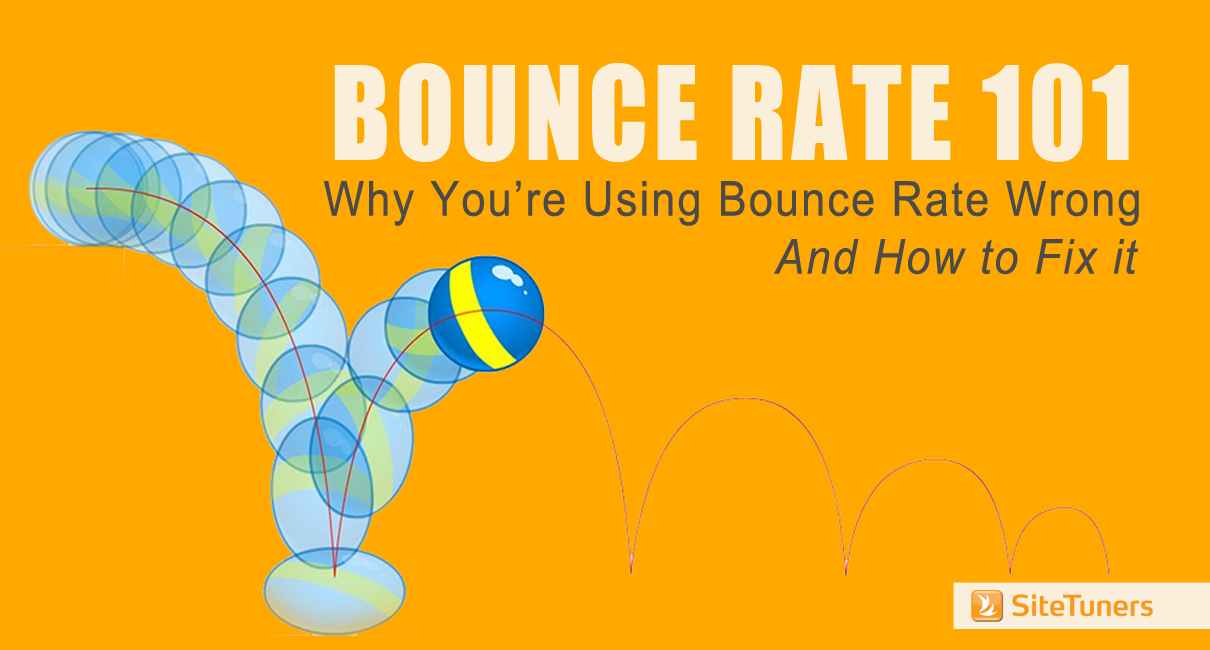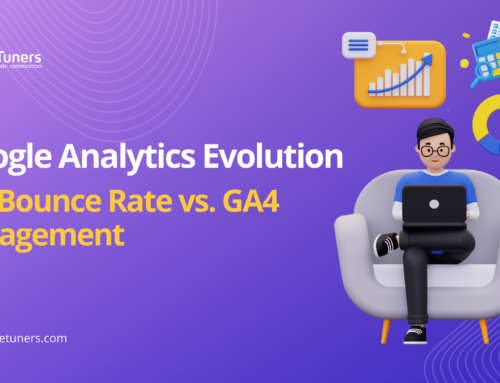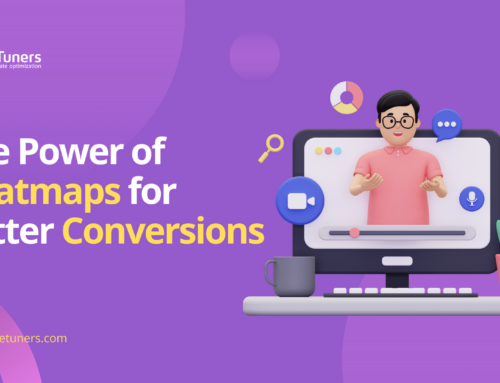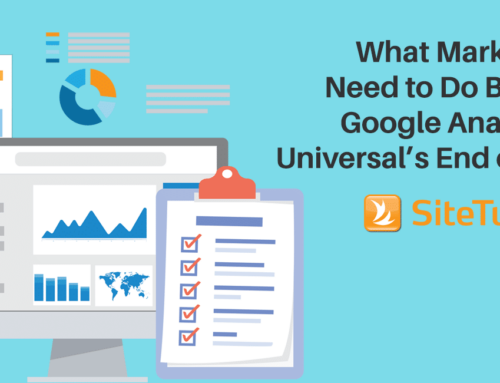 There are few metrics analysts obsess about more than the website’s bounce rate.
There are few metrics analysts obsess about more than the website’s bounce rate.
On paper, it’s easy to see why. Avinash Kaushik, one of the thought-leaders in the analytics space, defines bounces to pages as entry points where people came, puked, and left. And who wouldn’t want to analyze and fix pages where people puked and left?
In practice, though, bounce rate tends to be applied to the wrong pages, and what’s worse, it’s fairly inaccurate.
To understand why, we need to understand how web analytics tools track bounce rate and how you can tweak the tool or your site to make bounces more useful.
What is Bounce Rate on a website?
Bounce rate does what it says on the tin – it is the rate of people who “bounce” from the site without interacting with anything.
The problem is, by default, most web analytics tools can only see “clicks to other pages” as interaction.
- Users who stay on one page for 20 minutes, reading most of the content and generally finding what they need before exiting your site? They are tracked as a bounce.
- Users who download one or more of your PDFs, getting closer to becoming a customer in the process? They are tracked as a bounce.
Those aren’t the types of people who puked and left – those are visitors you engaged. It’s just that there are limitations within the web analytics tools that you need to overcome to see the true picture.
What is Bounce Rate useful for?
Bounce rate is incredibly useful as an engagement metric for the high-level pages of your site that are meant almost purely for navigation. That is, on your home page, where you’re just directing people where to go, bounce rate is pure gold.
Ditto for your top layer products page.
On the deeper layers of the site, bounce rate becomes less important as a metric. Visitors may come from a search engine, visit your blog about a topic, learn exactly what they need and leave happy while still being tracked as a bounce.
So, what you’re saying is, I shouldn’t focus on bounces of the deep pages too much?
Exactly.
You shouldn’t obsess about bounce rate for the detail pages of your products, or the deep layers of your blog.
You should be worried about high-traffic pages with high bounce rate, those are typically at the top of your page hierarchy.
Great. How exactly do I find high-traffic, high-bounce-rate pages?
If you use Google Analytics, you can use one of GA’s hidden features, Weighted Sort, to find pages you need to fix.
Of course, if PDFs are important to your conversion paths, then your bounce rate is probably wrong, and using just bounce rates can lead to poor decisions.
Wait, what? Why is my bounce rate wrong?
Your bounce rate is wrong because of a technical limitation.
Google Analytics and other web analytics tools can see when you go from page A to page B, but they can’t see when you go from page A to a PDF.
The PDF does not have your Google Analytics code, you see.
Oh. Is that it, or are there more problems with bounce rate?
Yep. Bounce rate also does not take into account how long a person has stayed on your pages before leaving. A person who left after 10 seconds (an annoyed visitor) is treated the same way as a person who left after 25 minutes (a potentially engaged visitor).
That can be bad. What can I do to fix both issues?
‘Glad you asked.
Fixing Bounce Rate for Time On Site
If you want to set a threshold and tell Google to stop treating people who read your content as a bounce, you can set a timed event.
This is a little bit tricky, as what makes for an “engaged” visitor will vary across industries. We’ll provide you the syntax, but you’ll need to adjust it to suit your needs.
To add an event that stops one page view, you need to add this snippet to your Google Analytics classic code:
setTimeout(“_gaq.push([‘_trackEvent’, ‘60_seconds‘, ‘read’])”,60000);
Read more about the implementation here.
Fixing Bounce Rate for PDFs
There are other ways of fixing this if you have tools like Google Tag Manager applied to your site, but that’s a post for another time.
For now, if you want to make sure Google Analytics can “see” the click to a PDF and treat it as an interaction, you need to tweak your link to show Google what you’re doing. The syntax looks like this:
<a href=”/blog-content/7-deadly-sins.pdf” target=_blank” onClick=”ga(‘send’, ‘event’, { eventCategory: ‘download’, eventAction: ‘pdf’});“>7 Deadly Sins of Landing Page Design</a>
Pay attention to the items highlighted – those tell Google to create an event, and treat the click to the PDF as a view, fixing the actual bounce rate on your page.
And that’s it.
Bounce rate is a good metric that can be made into a great metric – it’s a little broken at first, but with enough attention and configuration, it can become one of the best things to track on your site.




